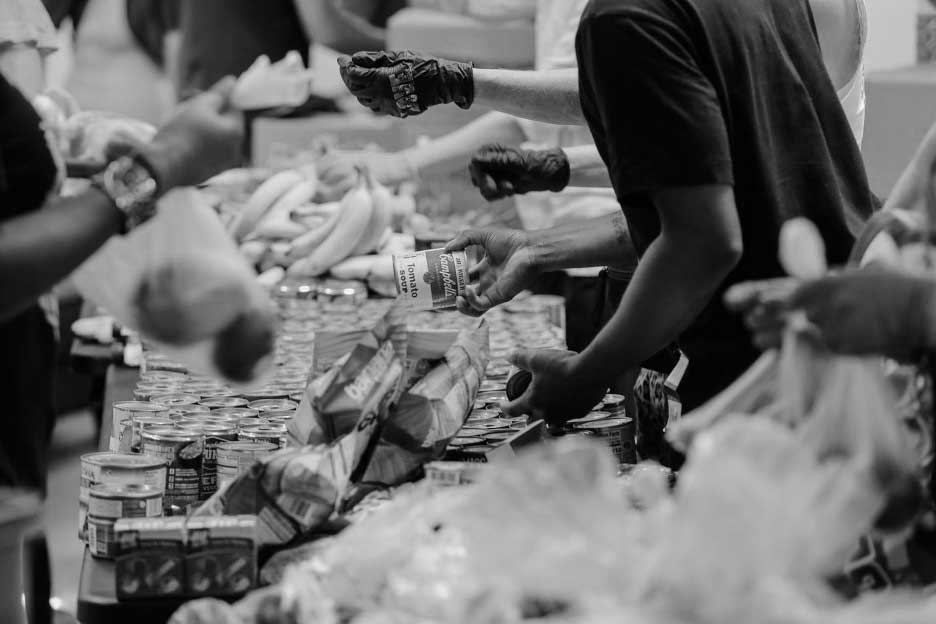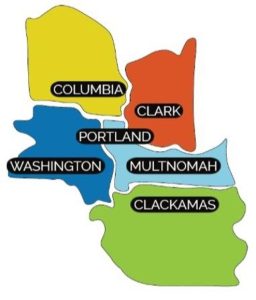The Red Cross. FEMA. Food Banks.
They are all part of the powerful images we see of agencies providing emergency food after natural disasters. But how does this happen? Who sends out the call for an emergency response? And who coordinates what happens on the ground?
The answer is almost as complex as the food system itself. The responsibility for marshaling an emergency response, which includes providing emergency food to city residents after a natural disaster, falls on federal, state, county, and city emergency management professionals. But who does what–and who leads the coordinated response—is not always clear.
City leadership challenges
In larger cities, city government will typically “take charge” after disasters in their cities (cue the image of the mayor at the lectern). This typically means that they scramble their resources to mount a quick reaction to the emergency threat. Too often, though, city officials are left without a knowledgeable team to guide the emergency food response, because most cities do not have a dedicated and relevant department that manages all aspects of the food system. Instead, they rely on secondments and reassigned staff.
In our seminal analysis of The Resilience of America’s Urban Food System: Evidence from Five Cities, commissioned by the Rockefeller Foundation in 2016, the throughline across all five cities was the lack of local government leadership during emergency food events. Just one issue we pointed to is the problem this created with communication: “Multiple layers of communication between federal, state and local governments coordinating with food distributors and retailers can create confusion in the aftermath of a disaster.” The private-sector distributors and retailers did not know who to contact for timely, accurate information, which meant delays in food supplies and grocery stores reopening.
Lessons learned from Boston
Boston, MA provides one example of how we worked with the city government to identify and address the local leadership gap. Working with us, in 2014, Boston became the first city of its size in the U.S. to study the impact of a natural disaster on its food system. It was motivated by the near miss of Superstorm Sandy two years earlier. Our team’s study was commissioned by the City of Boston’s Office of Food Initiatives (now the Office of Food Justice), in partnership with the Office of Emergency Management, Office of Environment, Energy and Open Space, and the Transportation Department.
This inter-agency commission was the first indication that finding the right home for food system leadership in local government would be challenging. As in most cities, city government responsibility for “food” in Boston was not centralized. Food safety, regulating food businesses and managing food assistance programs fall under different agencies.
To address this problem in Boston, the implementation roadmap we developed tasked the Director of the Office of Food Initiatives (which was established in 2010 and housed in the Mayor’s Office) with establishing a food system resilience committee that would include representatives from public- and private-sector food organizations. We recommended having it co-chaired by representatives from Health and Human Services, the Office of Emergency Management and the Office of Environment, Energy and Open Space. This new committee would be responsible for coordinating food system resilience planning and emergency food responses.
During the study, however, the Office of Food Initiatives was restructured with new leadership and staff, stalling implementation of our recommendations and putting into question again the leadership over emergency food responses within the city government. Boston reminds us that even with widespread support across local government agencies, including from the Mayor’s Office, food system resilience planning is complicated and can be derailed by other urgent issues, as well as competing core priorities within public agencies.
A potential model in Portland, Oregon
The Regional Disaster Preparedness Organization (RDPO) in Portland, Oregon offers an interesting alternative model to consider for local government leadership of food crises. A clear difference is that although it is housed within the City of Portland, it is an independent organization. It is funded by partner contributions and the Federal Emergency Management Agency (FEMA) Urban Areas Security Initiative (UASI) grant program, which means it is an independent agency that is not as vulnerable to local politics, and the vagaries of elected official platforms.
RDPO is also distinct because it is a regional coordinating body, serving communities within the five counties surrounding Portland (see image). This makes sense given that natural disasters don’t neatly fall within municipal boundaries. Established in 2012, RDPO was born out of a recognition that the region “can more effectively respond to disasters and facilitate recovery if they prepare together,” says RDPO’s website.
RDPO’s Service Area includes five counties surrounding Portland: Columbia, Clark, Washington, Multnomah, and Clackamas.”
In addition to partnering with other government agencies, RDPO also collaborates with non-governmental organizations and private-sector stakeholders. This structure makes it uniquely suited to take the lead on emergency food preparedness, which requires strong partnerships across the private sector and with community-based organizations.
Other metro areas should consider adopting the RDPO model for food system preparedness. It offers stable leadership insulated from shifting city government priorities and an unique partnership-based structure. As RDPO notes, collaboration builds the relationships needed to mount an efficient response, and “increases the ability to involve the whole community in preparedness.”
© The Feeding Cities Group, 2024



